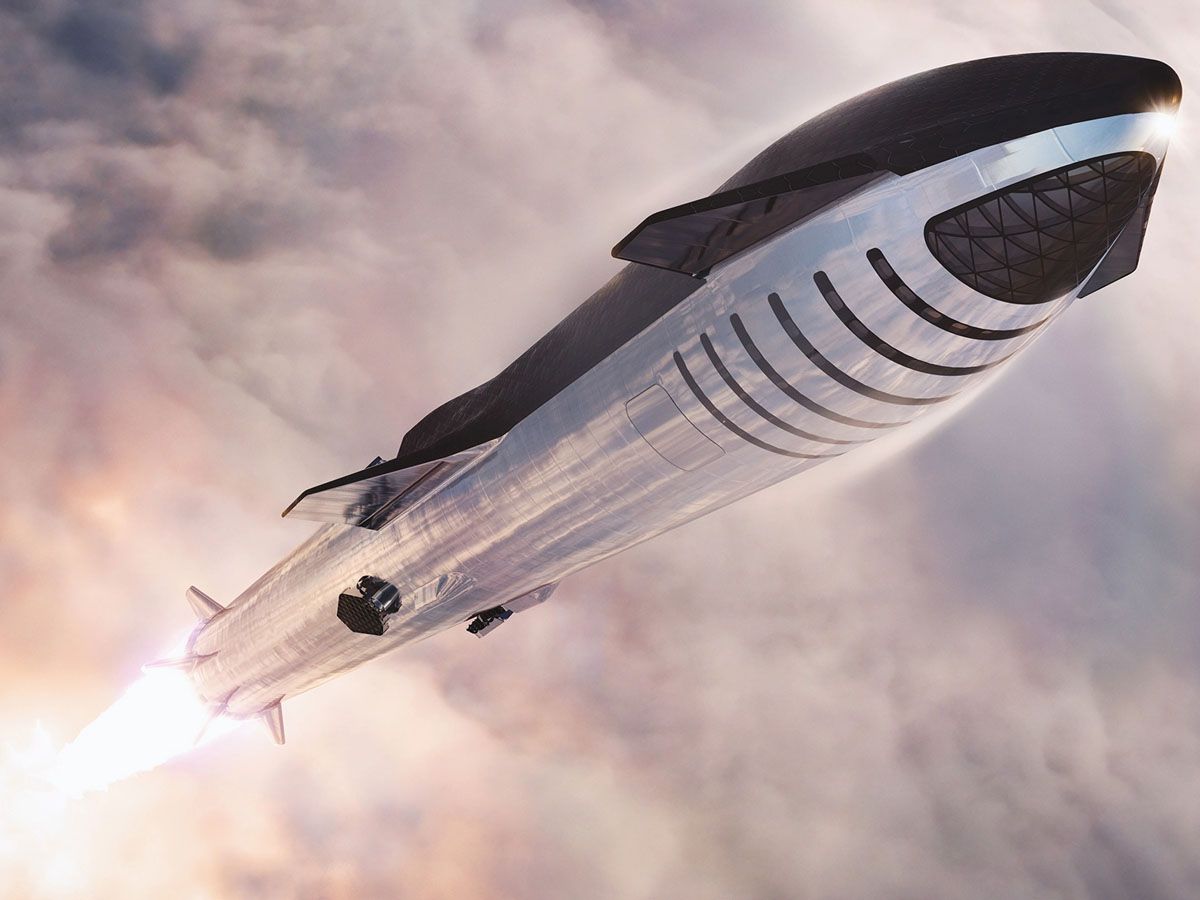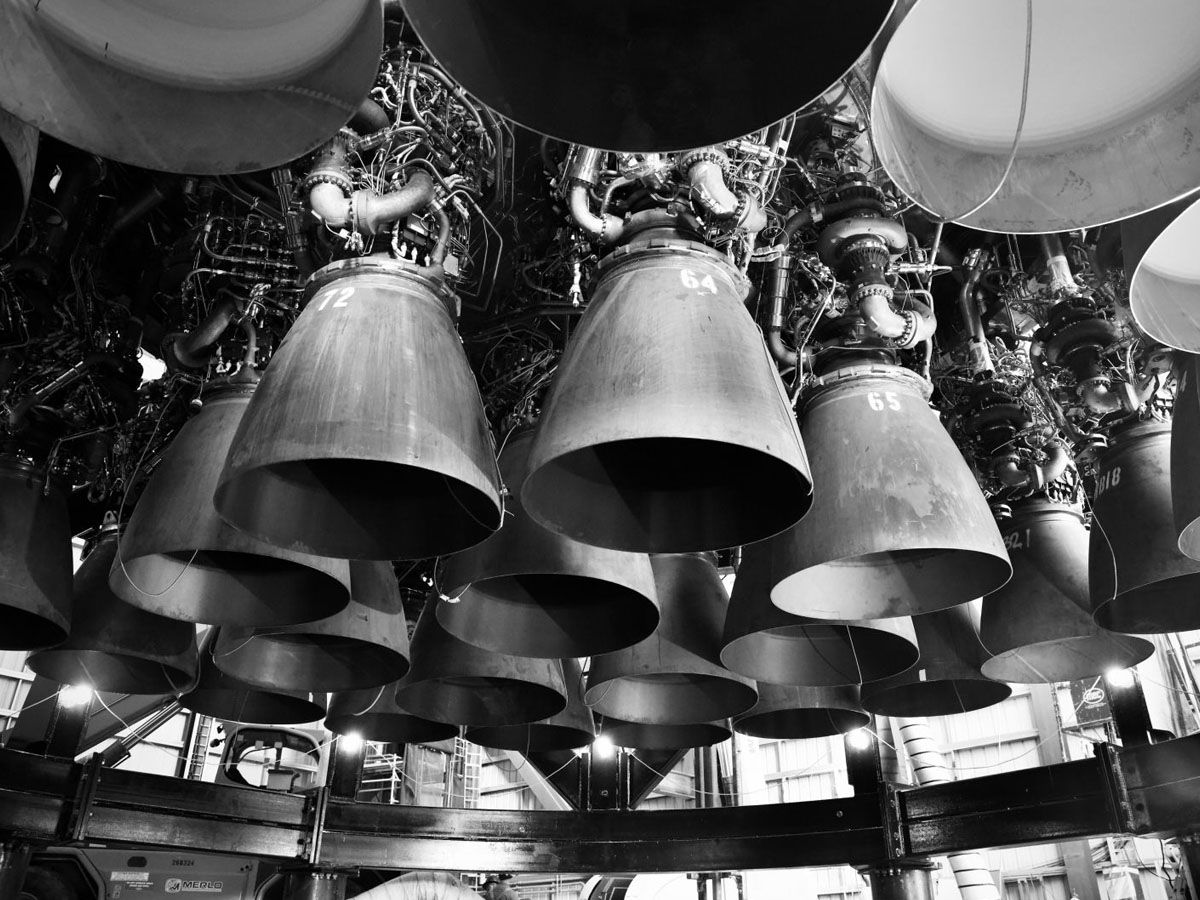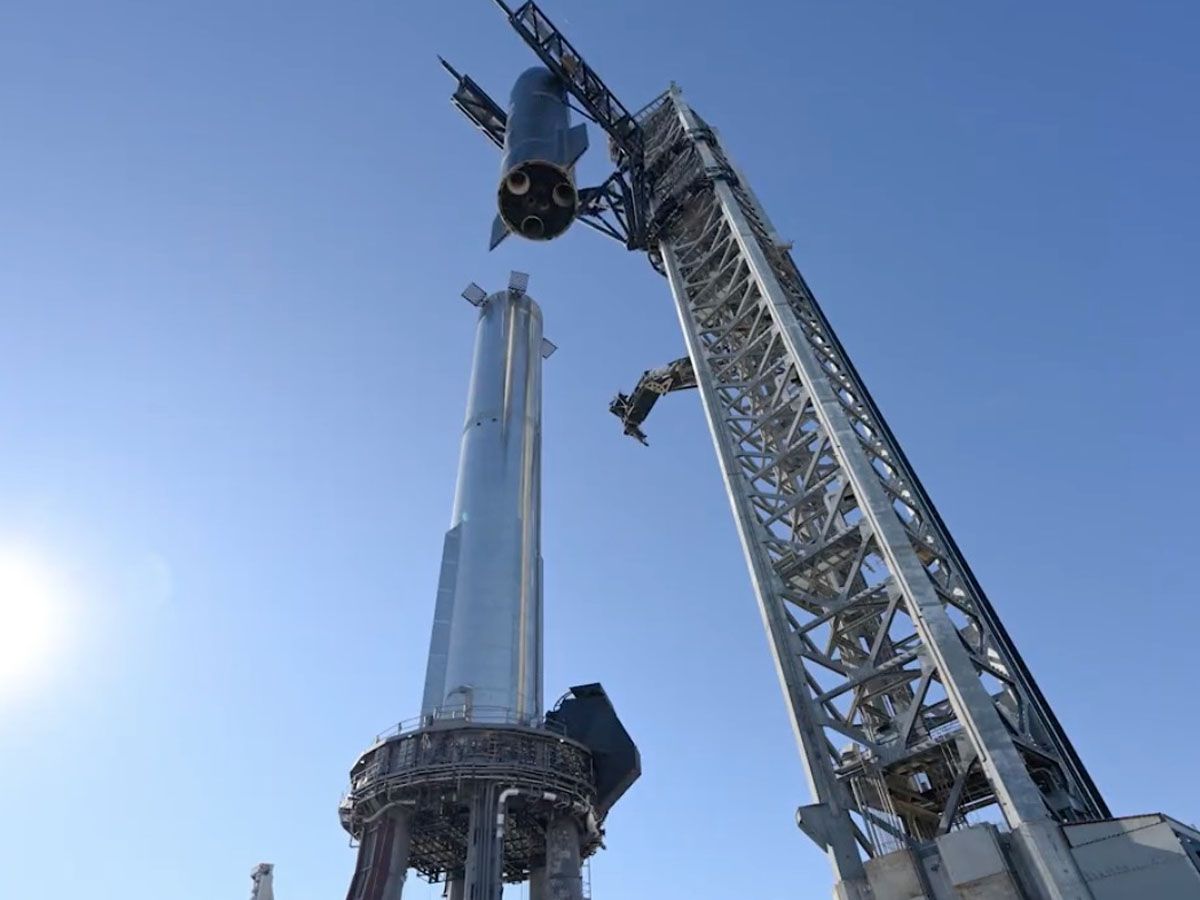The future of space travel is on the horizon as SpaceX pushes the limits of engineering and innovation with its game-changing Starship mega-rocket. Get ready to embark on a journey through this revolutionary heavy-lift launch vehicle's groundbreaking advancements and exciting milestones. From record-breaking payload capacity to daring space tourism flights and ambitious plans for crewed missions to Mars, Starship promises to take space exploration to new heights.
Starship Mega-Rocket Overview
Fully Reusable Heavy-Lift Launch Vehicle
At the core of the Starship revolution lies its fully reusable heavy-lift launch vehicle design, which sets it apart from its predecessors. Unlike traditional rockets, both the Starship spacecraft and its colossal booster, Super Heavy, are designed to be reused multiple times. This innovative approach aims to drastically reduce the cost of space travel by minimizing the need for building new rocket components for each launch.

Starship's impressive stainless steel structure is not only aesthetically striking but also provides the perfect balance between durability and weight, making it capable of withstanding the rigors of multiple spaceflights.
Capabilities and Applications
The Starship mega-rocket is designed to be the Swiss Army knife of space transportation, boasting an array of capabilities and applications that extend far beyond Earth's orbit. With a remarkable payload capacity of over 100 metric tons to low Earth orbit (LEO), it outperforms even the legendary Saturn V.

Starship's versatility enables it to tackle a wide range of missions, from deploying large satellites and space telescopes to ferrying cargo and crew to the International Space Station (ISS) and even lunar landings. Furthermore, its cutting-edge propulsion system and in-orbit refueling capabilities make it an ideal choice for deep space exploration, including crewed missions to Mars and beyond.
Impact on the Commercial Spaceflight Industry
The introduction of Starship is set to disrupt the commercial spaceflight industry in unprecedented ways. Its fully reusable design and extraordinary payload capacity promise to drive down the cost per kilogram of payload launched into space, making access to space more affordable than ever before. This cost reduction will likely encourage a surge of new investment in space-based ventures, from satellite constellations to space tourism and even lunar and Martian settlements.
Moreover, Starship's capabilities will inspire collaboration between government agencies, private companies, and research institutions, fostering a vibrant ecosystem of space innovation. Ultimately, the Starship mega-rocket represents a paradigm shift in the commercial spaceflight landscape, paving the way for a new era of exploration and technological advancements.
Starship Development Timeline
Inaugural Flight and Setbacks
The road to Starship's inaugural flight has been marked with both triumphs and setbacks, as SpaceX has faced multiple challenges along the way. Early prototypes were put through a series of rigorous tests, including static fire tests and short hop flights, to assess their performance and refine their design.
However, several test vehicles experienced issues during these trials, leading to explosions and crashes that provided valuable insights for future iterations. Despite these challenges, SpaceX remained undeterred, leveraging each setback to improve the subsequent prototypes and inch closer to their ambitious goal of revolutionizing space travel.
Delays and Predictions for Future Launches
As with any groundbreaking project, the development of Starship has been subject to delays due to technical challenges, regulatory hurdles, and even global events such as the COVID-19 pandemic. Although these delays have pushed back the timeline for Starship's maiden voyage, they have not dampened the enthusiasm of SpaceX or its founder, Elon Musk, who remains steadfast in his vision for the spacecraft.
With each passing milestone, the prospect of future launches grows more tangible. It is predicted that, in the coming years, we will witness an increasing number of Starship launches, including crewed missions to the ISS, lunar landings, and even the first crewed mission to Mars.
Development History and Costs
Since its inception in 2012 as the Mars Colonial Transporter (MCT), Starship has undergone multiple design iterations and name changes, evolving into the colossal mega-rocket we know today. Throughout this development journey, SpaceX has invested significant resources, both financial and human, to turn its vision into reality.

While exact figures are difficult to ascertain, it is estimated that the development costs for Starship are in the billions of dollars, a price Musk believes is well justified given the potential long-term benefits. By pushing the boundaries of engineering and science, the Starship project aims to dramatically lower the cost of access to space, opening up a new era of exploration and innovation that could ultimately transform humanity's relationship with the cosmos.
Technical Specifications and Features
Payload Capacity and Lifting Power
The Starship mega-rocket boasts an impressive payload capacity and lifting power, making it one of the most powerful launch vehicles in history. It is designed to carry up to 150 metric tons to low Earth orbit (LEO), significantly surpassing the capacity of traditional heavy-lift rockets.
This remarkable lifting capability is made possible by the combined thrust of Starship's 6 Raptor engines and the Super Heavy booster's 33 additional Raptor engines, working in tandem to propel the spacecraft and its cargo into orbit.
Upper Stage and Super Heavy Booster
Starship comprises two main components. The upper stage, which is the spacecraft itself, and the Super Heavy booster, a massive rocket responsible for providing the initial thrust needed to escape Earth's gravitational pull.
The upper stage is designed for a variety of missions, including cargo delivery, crewed missions, and interplanetary voyages, while the Super Heavy booster facilitates the spacecraft's launch. Both stages are fully reusable, a critical feature that will substantially reduce the cost of space travel.

Launch and Catch Tower ("Mechazilla")
To further enhance the reusability of Starship, SpaceX has developed an innovative launch and catch tower, colloquially known as "Mechazilla." This advanced infrastructure is designed to catch the returning Super Heavy booster, eliminating the need for a traditional landing pad and reducing wear and tear on the booster. The tower is also equipped to aid in the stacking and integration of Starship components, streamlining the entire process and making it more efficient and cost-effective.
Launch Towers and Locations
SpaceX has constructed several launch towers and facilities to support the ambitious Starship program. The primary launch site is located at the Boca Chica facility in Texas, which has seen numerous prototype tests and launches. Additionally, SpaceX is developing a launch complex at the Kennedy Space Center in Florida to facilitate future Starship missions to the International Space Station and beyond. These strategic locations ensure that SpaceX can capitalize on the unique advantages of each site, such as proximity to equatorial orbits, while also providing redundancy and flexibility for their ambitious launch schedule.
Testing and Milestones
Suborbital Tests and Static Fire Tests
Before reaching its current stage of development, the Starship program underwent a series of rigorous suborbital tests and static fire tests. These tests were crucial in evaluating the performance of the Raptor engines, the vehicle's structural integrity, and the overall design. Suborbital tests involved launching prototypes to various altitudes, reaching up to 10 kilometers, and returning them safely to the ground.
Static fire tests, on the other hand, involved igniting the engines while the vehicle remained firmly secured to the ground, allowing engineers to assess their performance under realistic conditions.
Environmental Mitigation Actions
SpaceX has consistently worked to minimize the environmental impact of its Starship program. This includes the implementation of numerous mitigation actions, such as recycling the majority of the water used during testing, using environmentally friendly materials in construction, and developing comprehensive wildlife management plans to protect local ecosystems.
Additionally, SpaceX actively engages with regulatory agencies and local communities to ensure its operations meet environmental standards and minimize any potential harm to the surrounding areas.
Applications and Future Plans
Satellite Delivery, Space Tourism, and Moon Trips
The Starship mega-rocket is designed for versatility, with applications that span satellite delivery, space tourism, and lunar missions. Its payload capacity and fully reusable design make it an attractive option for satellite deployment, reducing the cost of access to space and enabling the launch of larger satellites.
Space tourism is another area with vast potential, as Starship's ability to carry a large number of passengers and provide a comfortable journey opens the door to a new era of space travel. Furthermore, the lunar capabilities of Starship position it as a key player in upcoming Moon missions, with the potential to transport both crew and cargo for lunar base construction and scientific endeavors.
Elon Musk's Ambitious Plans for Mars
One of the most ambitious goals set by SpaceX founder Elon Musk is the colonization of Mars. The Starship mega-rocket has been specifically designed with this objective in mind, as it will serve as the primary transportation vehicle for humans and resources to the Red Planet.
Musk envisions a future where fleets of Starships carry thousands of people and supplies to establish a self-sustaining Martian colony, ultimately reducing the risk of human extinction and paving the way for further exploration of the solar system.
NASA's Artemis Program
The Starship's capabilities have also captured the attention of NASA, which has selected SpaceX to develop the lunar landing vehicle for the Artemis program. This program aims to return humans to the Moon by 2024 and establish a sustainable presence by 2028.
The Starship will play a pivotal role in accomplishing these goals, as it will transport astronauts from lunar orbit to the surface and back, while also delivering essential supplies and equipment for lunar exploration and habitation. The collaboration between SpaceX and NASA showcases the immense potential of the Starship mega-rocket in shaping the future of human spaceflight and our endeavors beyond Earth.
Starship Design and Variants
Starship Spacecraft
The Starship spacecraft is a cutting-edge vehicle that serves as the upper stage of the Starship mega-rocket. It features a stainless steel structure designed for durability and thermal resistance, with a heat shield on its windward side to protect against extreme temperatures during atmospheric reentry. The spacecraft is equipped with a spacious crew compartment, providing ample living space for astronauts during extended missions. Additionally, its large payload bay can accommodate a variety of cargo, from satellites to rovers and other scientific equipment.
Super Heavy Booster
The Super Heavy booster is the powerful first stage of the Starship mega-rocket, responsible for propelling the spacecraft beyond Earth's atmosphere. With a stainless steel structure similar to the spacecraft, the booster is designed for reusability and can be rapidly prepared for multiple flights.
The booster is outfitted with a significant number of Raptor engines, providing the thrust needed to lift heavy payloads and escape Earth's gravity. The Super Heavy booster also features grid fins for precise control during descent and landing.
Raptor Engines
The Raptor engines are a crucial component of both the Starship spacecraft and Super Heavy booster, as they provide the propulsion needed for launch and in-space maneuvers. These advanced engines utilize a full-flow staged combustion cycle, allowing for increased efficiency and performance.
They are fueled by a combination of liquid methane and liquid oxygen, which offers a cleaner and more sustainable propellant choice compared to traditional rocket fuels. The Raptor engines are designed for reusability and can undergo multiple ignitions, contributing to the overall cost-effectiveness of the Starship mega-rocket.

Different Starship Variants
The Starship has been designed with several variants in mind, each tailored to specific mission requirements and applications. Some of the notable variants include:
- Crewed Starship: Designed for human spaceflight, this variant features life support systems, sleeping quarters, and recreational areas to accommodate astronauts during long-duration missions.
- Cargo Starship: Tailored for satellite deployment and resupply missions, this variant is equipped with a large payload bay and a payload adapter for secure satellite mounting.
- Lunar Starship: Modified for lunar landings and surface operations, this variant includes additional landing gear, extended fuel storage, and specialized equipment for lunar exploration.
- Mars Starship: Engineered for Mars missions, this variant is designed to withstand the harsh Martian environment and features advanced life support systems, in-situ resource utilization capabilities, and surface mobility equipment.
These diverse variants demonstrate the adaptability and potential of the Starship mega-rocket to address a wide range of mission objectives and space exploration endeavors.
Comparison with Falcon 9
Similarities and Differences
The Falcon 9, SpaceX's earlier success story, and the Starship mega-rocket share some core principles, such as reusability and cost-effectiveness, but also have significant differences that set them apart. Both vehicles utilize state-of-the-art technology and prioritize the reduction of launch costs through reusability.
However, the Starship is designed as a larger, more powerful, and versatile vehicle, with capabilities far surpassing those of the Falcon 9. While Falcon 9 has primarily focused on satellite launches and cargo resupply missions to the International Space Station (ISS), Starship aims to cover a broader range of applications, including crewed missions to the Moon and Mars.
Engine Technology and Fuel Types
The engine technology and fuel types used in the Falcon 9 and Starship mega-rockets also differ. Falcon 9 is powered by Merlin engines, which employ a gas-generator cycle and use a combination of liquid oxygen (LOX) and rocket propellant 1 (RP-1) as fuel.
In contrast, the Starship mega-rocket is equipped with Raptor engines, which utilize a more advanced full-flow staged combustion cycle and are fueled by a combination of liquid methane and liquid oxygen. The switch to methane as a fuel source offers several advantages, including reduced coking, better performance in a Martian environment, and the potential for in-situ resource utilization.
Reusability and Landing Techniques
Both Falcon 9 and Starship mega-rockets showcase impressive reusability features, with each vehicle designed to be recovered and refurbished for multiple launches. The Falcon 9's first stage utilizes grid fins and cold gas thrusters for control during descent and lands either on autonomous drone ships at sea or on land-based landing pads. Its landing legs deploy shortly before touchdown, providing stability during landing.

The Starship mega-rocket takes reusability to the next level. Both the spacecraft and the Super Heavy booster are designed to be fully reusable, with the spacecraft capable of landing vertically using its Raptor engines and specialized landing gear. The Super Heavy booster also features grid fins for precise control during the descent, similar to the Falcon 9. However, SpaceX is developing an innovative "catch" mechanism for the Super Heavy booster, using a launch tower nicknamed "Mechazilla" to capture and secure the booster during its descent. This method, if successful, would eliminate the need for landing legs on the booster, reducing overall weight and increasing efficiency.
Overall, while both Falcon 9 and Starship mega-rockets share a commitment to reusability, the Starship offers significant advancements in terms of capabilities, engine technology, and innovative landing techniques, setting it apart as a next-generation launch vehicle.
Reusability and Impact on Spaceflight
Cost Implications and Launch Frequency
The Starship Megarocket's emphasis on reusability has the potential to revolutionize the spaceflight industry by significantly reducing the costs associated with launching spacecraft. By recovering and reusing both the spacecraft and the Super Heavy booster, SpaceX aims to minimize the expenses related to manufacturing new hardware for each mission.
This cost reduction allows for more frequent and affordable launches, which in turn, opens up opportunities for more ambitious and diverse space exploration missions. Furthermore, increased launch frequency is expected to attract new customers, expand the commercial spaceflight market, and drive innovations in satellite technology, space tourism, and scientific research.
Innovative Hardware and Construction Methods
SpaceX's Starship mega-rocket showcases several innovative hardware components and construction methods that contribute to its reusability and impact on the spaceflight industry. For instance, the use of stainless steel for the vehicle's structure has several advantages, including better thermal properties, lower production costs, and enhanced durability. The Raptor engines, designed for multiple uses, demonstrate high performance and efficiency, while the advanced heat shield protects the spacecraft during reentry, enabling it to withstand the rigors of repeated flights.
Additionally, the introduction of the "Mechazilla" catch tower exemplifies SpaceX's commitment to pioneering new technologies that streamline launch and recovery processes. These innovations, combined with the company's iterative design approach, have resulted in a vehicle that pushes the boundaries of what is possible in spaceflight.

Recovery and Reentry Challenges
Reusability, however, does not come without its challenges. Recovery and reentry present significant technical hurdles that must be overcome to ensure the viability of reusable launch systems. For instance, the Starship must contend with the intense heat generated during reentry, which can cause damage to the vehicle's structure and systems. The heat shield technology, specifically designed to protect the spacecraft, must be both robust and lightweight to maintain reusability and performance.
Moreover, recovering and refurbishing the spacecraft and Super Heavy booster for multiple launches require precise control during the descent, as well as efficient and cost-effective maintenance processes. SpaceX must continue to develop and refine its landing techniques, such as the use of grid fins for stability and the innovative "Mechazilla" catch tower, to achieve a seamless and economically viable recovery process.
Starship's Potential to Transform Spaceflight
SpaceX's Starship mega-rocket represents a giant leap forward in space technology, with the potential to radically transform the spaceflight industry. Its fully reusable design, innovative hardware components, and exceptional payload capacity make it a game-changer in the realm of space exploration.
By significantly reducing the costs associated with launching spacecraft, Starship will democratize access to space and enable more ambitious missions, such as satellite deployments, lunar landings, and even manned trips to Mars. Furthermore, the success of the Starship program is expected to inspire new technologies and innovations in the commercial space sector, spurring competition and driving advancements in various applications, including space tourism, scientific research, and deep-space exploration.
Anticipated Challenges and Breakthroughs
Despite its immense potential, the Starship mega-rocket faces numerous challenges that must be addressed to fully realize its transformative capabilities. These challenges include overcoming the technical hurdles associated with recovery and reentry, ensuring the safety and reliability of the vehicle through rigorous testing, and navigating regulatory and environmental concerns. Additionally, achieving the ambitious goals set by SpaceX founder Elon Musk, such as Mars colonization, will require not only technological breakthroughs but also international collaboration and investment in space infrastructure.
However, history has shown that with determination and ingenuity, humanity can overcome seemingly insurmountable obstacles to achieve incredible feats. The Starship program is a testament to this spirit of innovation and progress, and its success has the potential to usher in a new era of space exploration that will reshape our understanding of the cosmos and redefine the limits of human potential. As we eagerly await the future milestones and achievements of SpaceX's Starship mega-rocket, it is clear that the journey has just begun, and the possibilities are truly out of this world.
Sources: gizmodo.com / spacevoyaging.com / everydayastronaut.com












